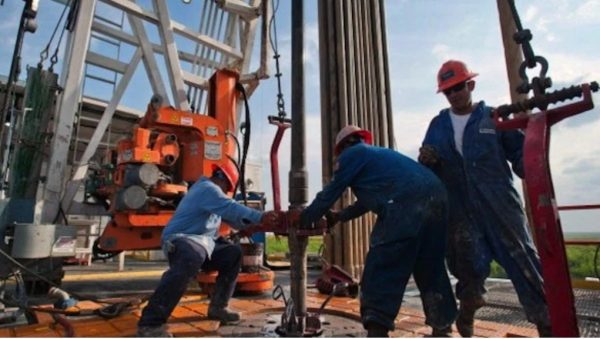Crude Oil Price Hits May 2015 High at $67 per barrel
 Oil price wednesday hit $67 per barrel for the first time since May 2015, before dropping to $66.27 despite the supply disruptions in Libya and the North Sea.
Oil price wednesday hit $67 per barrel for the first time since May 2015, before dropping to $66.27 despite the supply disruptions in Libya and the North Sea.
The prices of both crude futures fell after hitting a near two-and-a-half year high in the previous session as analysts said the rally was gradually running out of steam.
While Brent crude futures dropped to $66.27 a barrel, after breaking through $67 for the first time since May 2015, the United States West Texas Intermediate (WTI) crude futures were at $59.53 a barrel.
WTI broke through $60 a barrel for the first time since June 2015 in the previous session.
On Tuesday, Libya lost around 90,000 barrels per day (bpd) of crude oil supplies from a blast on a pipeline feeding Es Sider port.
Repair of the pipeline could take about one week but will not have a major impact on exports, the head of Libyan state oil firm NOC told Reuters on Wednesday.
The Libyan outage added to supply disruptions of recent weeks, which also included the closure of Britain’s largest Forties pipeline.
On Wednesday, Forties was pumping at half its normal capacity and its operator was pledging to resume full flows in early January.
The Forties and Libyan outages, which together amount to around 500,000 bpd, are relatively small in a global context of both production and demand approaching 100 million bpd.
Oil markets have tightened significantly over the past year thanks to voluntary supply restraint led by the Middle East-dominated Organisation of the Petroleum Exporting Countries (OPEC) and non-OPEC Russia.
Data from the US Energy Information Administration (EIA) shows that following rampant oversupply in 2015, global oil markets gradually came into balance by 2016 and started to show a slight supply deficit this year.
EIA data implies a slight supply shortfall of 180,000 bpd for the first quarter of 2018.
OPEC had at their November 30, 2017 meeting agreed to extend oil output cuts until the end of 2018 as part of the global efforts to eliminate excess oil supply in the international market.
The current deal, under which OPEC and non-OPEC producers are cutting supply by about 1.8 million barrels per day (bpd) in an effort to boost oil prices, expires in March 2018.
But the organisation in their last meeting had agreed to extend the cuts by nine months until the end of 2018, as largely anticipated by the market.
The decision to extend the production cuts saw crude oil prices rising, with the global benchmark Brent trading briefly at a two and a half year high at $67 per barrel yesterday.
However, a major factor countering efforts by OPEC and Russia efforts to prop up prices is US oil production which has soared more than 16 per cent since mid-2016 and is fast approaching 10 million bpd.
Only OPEC king-pin Saudi Arabia and Russia produce more.
With oil prices rising above $60, Russia had expressed concern that an extension of the cuts for the whole of 2018 could prompt a spike in crude production in the United States, which is not participating in the deal.
Russia needs much lower oil prices to balance its budget than OPEC’s leader Saudi Arabia, which is preparing a stock market listing for national energy giant Aramco next year and would hence benefit from pricier crude.
Copyright MMS Plus.
All rights reserved. This material, and other digital content on this website, may not be reproduced, published, broadcast, rewritten or redistributed in whole or in part without prior express written permission from KINGS COMMUNICATIONS LIMITED.







